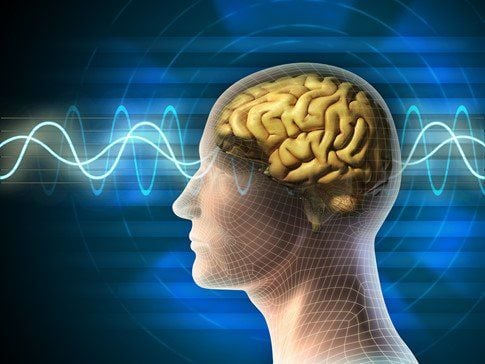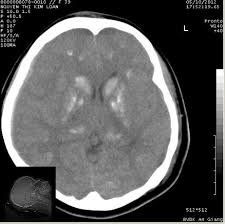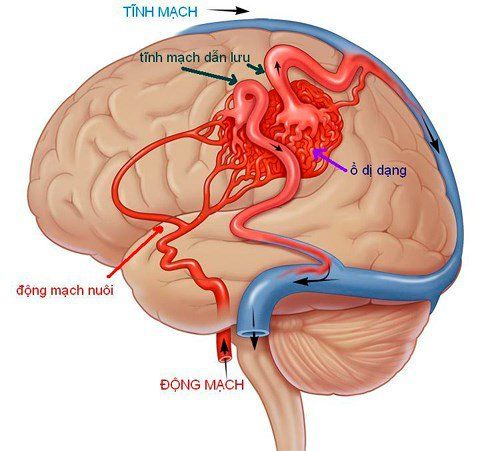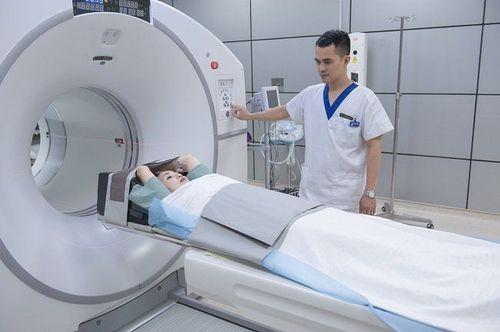This is an automatically translated article.
The article is expertly consulted by Master, Doctor Luu Thi Bich Ngoc - Doctor of Radiology - Department of Diagnostic Imaging and Nuclear Medicine - Vinmec Times City International General Hospital.Computerized tomography with 3D rendering is a technique to help locate the location of the lesion and its surrounding areas. From there, the most effective approach to injury and treatment is available. This is a non-invasive imaging technique with high value in the diagnosis of a number of diseases.
1. What is 3d rendering computed tomography of the brain?
Computed tomography of the brain with 3D rendering is an advanced technique that helps surgeons locate in space the location of the lesion, thereby finding the fastest and safest direction of the next lesion. 3D rendering techniques include 3D rendering of brain parenchyma, 3D of skull and 3D of cerebral blood vessels.This technique helps doctors diagnose brain diseases and provide appropriate treatment. This technique has high accuracy, fast processing time, and is effective in some acute diseases requiring early diagnosis and treatment.
2. Indications and contraindications of cranial computed tomography with 3d rendering

Khi nghi ngờ bệnh nhân có vấn đề bất thường như chảy máu dưới nhện, dị dạng mạch máu não,... bác sĩ sẻ chỉ định chụp cắt lớp vi tính sọ não
Suspected cerebrovascular abnormalities such as subarachnoid hemorrhage, cerebral parenchymal bleeding, intraventricular bleeding...
Cerebral vascular malformation, cerebral aneurysm...
Cases of skull bone injuries such as: Fracture of skull and maxillofacial bones, skull subsidence, early craniosynostosis, skull deformity
Contrast foreign body in skull
● Cases of brain tumor there are indications for surgery or stereoscopic radiation
Contraindications:
● Relative: In the examination area there are many metals that interfere with the image, the patient is pregnant, especially the first 3 months. If you are pregnant, you must wear a lead shirt to cover your abdomen.
● Patients with contraindications to using iodinated contrast agents such as history of allergy to contrast media, kidney failure, severe liver failure, uncontrolled hyperthyroidism...
3. Brain CT scan with 3d rendering
3.1 Preparation of Performer: A physician and radiologist is required.Means used for cerebral vascular computed tomography include:
● Multi-segment computed tomography machine, contrast dye pump
● Film, printer and image storage system
● Medicines water-soluble iodinated contrast material
● Supplies: 10, 20 and 50ml syringes and needles; threaded needles 18-20G; syringe for contrast injection; antiseptic solution for skin and mucous membranes; physiological saline, gloves, mask, tray set, cotton gauze.
● Medicine box and necessary tools to handle complications in case of abnormalities when contrast is injected.
Patient:
● The patient is clearly explained about how to take the scan and the possible complications when taking, injecting contrast so that it can be coordinated with the photographer.
● Remove items such as earrings, necklaces, hairpins... (if any)
● You need to fast before 4 hours. You can drink water but not more than 50ml.
● The patient is too excited, can't stay still, is worried and scared: Give a sedative before taking the picture.
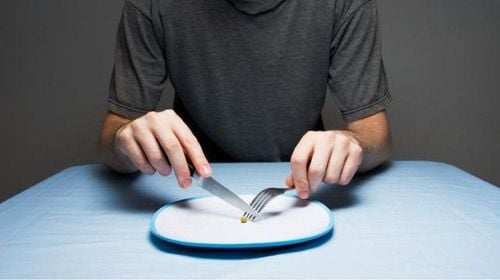
Người bệnh cần lưu ý nhịn ăn, nhịn uống trước khi thực hiện thủ thuật 4 tiếng
● Step 2: Conduct cranial imaging, place cranial scans according to a program for the upper and lower areas of the tent. After capturing the images on the screen, select the images needed to reveal the pathology.
● Step 3: Place a vein to prepare to inject contrast agent into the body. The usual dosage is 1-2 ml/kg body weight.
● Step 4: Take a film before injecting contrast, the purpose is to erase the background.
● Step 5: Perform a bolus test of the common carotid artery at the level of the C4 cervical vertebra. Next, select the time to take the X-ray during the injection, set the imaging field from C4 to the top of the skull.
● Step 6: Conduct contrast injection and take a film, remove contrast with physiological saline.
● Step 7: The acquired image will be modeled according to the MIP, MPR, VRT guidelines to reveal the pathology. 3D rendering can be modeled after blood vessels, brain parenchyma, skull...
3.3 Results evaluation Obtained image standards: The obtained image needs to be clear, without vibration and motion noise. Displays the cerebral artery system from the base of the skull to the dome of the skull. 3D rendering of cerebrovascular system, brain parenchyma, skull clearly and fully.
The doctor reads the lesion, describes the lesion and prints the results.
4. Complications that can occur when cephalometric computed tomography has 3d rendering
Some patients with claustrophobia may be agitated with anxiety and fear: Treat with sedation and monitoring during imaging.Some complications can occur due to contrast injection such as:
● Anaphylaxis: After contrast injection, within 1 hour, symptoms such as itching, urticaria, rash, angioedema appear. , abdominal pain, vomiting, bronchospasm causing difficulty breathing, stridor, laryngeal edema causing difficulty breathing, chest indrawing, hypotension, shock, the patient may lose consciousness. It is necessary to treat according to the anti-anaphylactic regimen of the Ministry of Health.
● Contrast-induced renal failure: A condition in which acute renal failure or increased renal failure occurs after contrast media use, but other causes affecting renal function should be excluded. Usually occurs within about 3 days of using the contrast agent. Manifested as an increase in serum creatinine above 25% or 44 μmol/l (0.5 mg/dl)
● Thyroid storm: A severe, life-threatening condition in patients who are already suffering from hyperthyroidism. Thyroid. Therefore, it is very important to declare a medical history before taking a thyroid scan.
● Because of the risk of affecting the fetus's development, pregnant women, especially those who are pregnant in the first 3 months of pregnancy, need to consider carefully before taking pictures and often wear lead clothes when taking pictures to protect the area. belly.
● Allergic reactions such as mild itching, but these usually go away quickly.

Sau khi chụp vi tính cắt lớp sọ não người bệnh có thể gặp phản ứng ngứa nhẹ
Vinmec International General Hospital with a system of modern facilities, medical equipment and a team of experts and doctors with many years of experience in medical examination and treatment, patients can rest assured to visit. examination and treatment at the Hospital.
Master, Doctor Luu Thi Bich Ngoc has 06 years of experience working in the field of diagnostic imaging, received formal training and graduated with a Master's degree from Hanoi Medical University. Dr. Ngoc has strengths in diagnosing breast, thyroid, liver cancers early. experience in doing ultrasound of tissue elastography for liver, breast, thyroid diseases... From 2019 until now, Dr. Ngoc has worked at Vinmec Times City International Hospital with a position at the department. Image analysation.
To register for examination and treatment at Vinmec International General Hospital, you can contact Vinmec Health System nationwide, or register online HERE.
READ MORE
Diagnosis of cerebrovascular abnormalities in headache patients by CT angiography What is CT scan? In which cases need contrast injection? Brain CT scan: What you need to know







